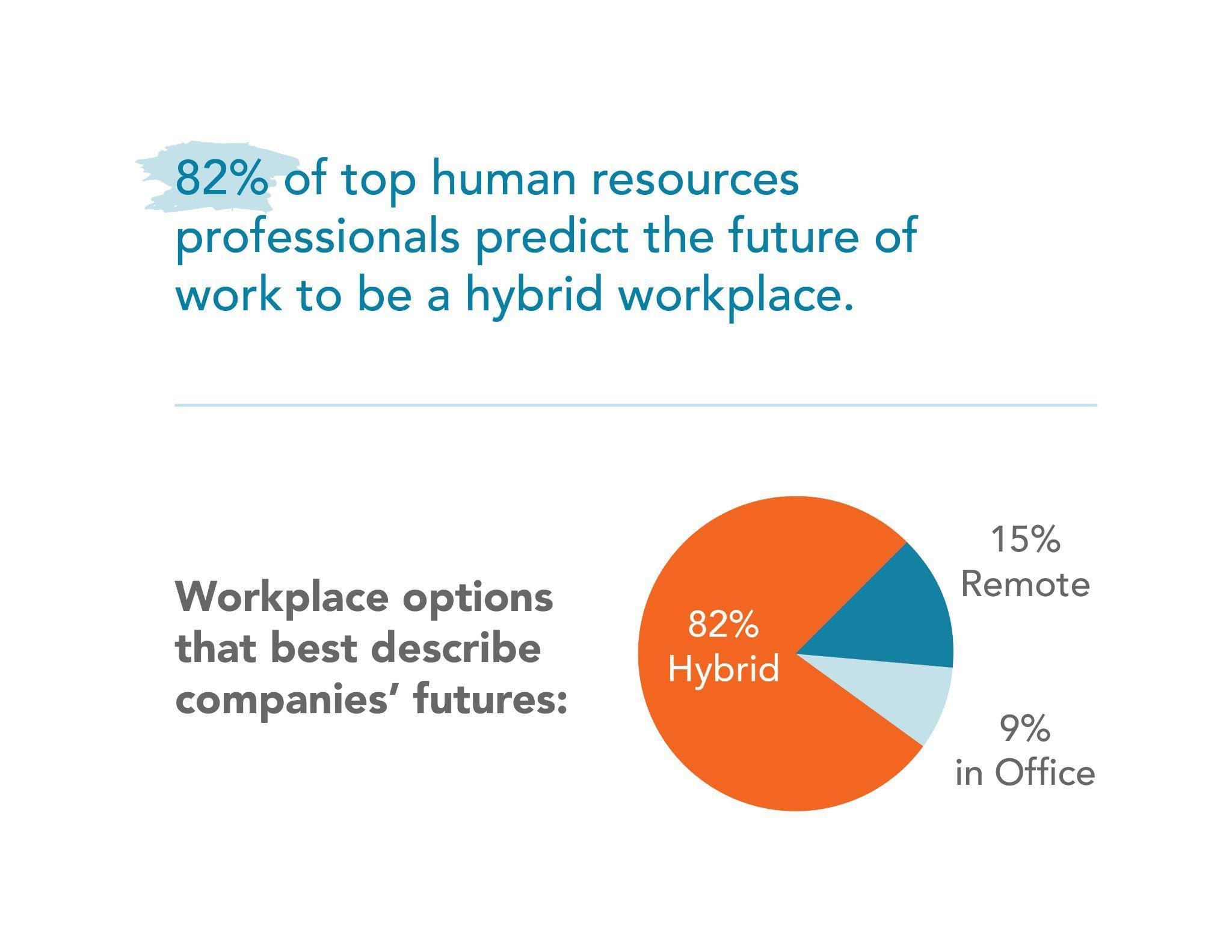The Great Resignation May Lead to Significant Boosts in Boomerang Workers
September 17, 2021 by Raymond Lee
The global pandemic has led to the largest disruption in the workforce in modern history. HR executives and business leaders are being forced to make unprecedented decisions about whether to return to the office, make the remote work experiment a reality, or find some middle ground by blending the two.
This article answers the question: once employers rethink their workforce strategy and make the switch to hybrid work and offer more flexibility, will this attract workers to return back to their previous jobs?
The Shift to A Hybrid Workplace
In the 2021 Report: The New Flexible Workforce, a recent survey conducted by Careerminds, reports that top HR leaders and their employees collectively agree that the shift to a more flexible, hybrid workforce is the route to go. 82% of top HR professionals predict that the future of work will be hybrid, making them more competitive and agile in attracting and retaining top talent.

At the same, it’s predicted that companies who force a full return-to-office mandate upon their employees may be poised to suffer in the post-pandemic war for talent and be at risk of significant turnover.
The data is clear: extreme flexibility and hybrid work will define the post-pandemic workplace.
A 2021 report by Gartner predicts that by 2022, more than two-thirds of employees will consider flexible working arrangements to be a differentiator when selecting an employer. 60% of workers will prefer a wellness-equipped smart office relative to a remote office.
While there are many benefits to organizations who adopt a remote or hybrid workplace, according to the Careerminds report, HR leaders and employees reveal that there are also many challenges that have led to the 2021 “Great Resignation.” 67% of respondents suggested that the biggest challenges in a hybrid workplace are company culture and communication, technical issues, and employee engagement.
Forcing Employees to Return to In-Person Work is a Leading Contributor to ‘The Great Resignation’
According to a new report by Adobe, in April, more than 4 million employees quit their jobs. And another 4 million did so in June. The trend is not slowing down, as Gen Z and Millennial workers say they are unhappy in their jobs. These groups are the driving force behind “The Great Resignation.”
With more than 9 million open positions, inflexible employers are struggling to find workers as more businesses open up. A lot of this is attributed to young people demanding change.
The question then becomes: as employers rethink their workforce strategy of hybrid work and consider offering more flexibility, will this attract workers to return to their jobs?
Rolling Out the Red Carpet for Departing Employees
While employees are leaving their employers in droves, it is critical that companies treat employees with dignity and respect as they exit – they should consider them as brand ambassadors to the company.
Harvard Business Review recently published the article, Turning Departing Employees into Loyal Alumni, explaining that the lack of attention to the exit process is a huge mistake employers are making. Companies spend too much time in the pre-hire and post-hire world and practically no time on the offboarding process.
Harvard Business Review further explains that building a humane and well-run offboarding program can have a considerable impact on people’s impression of a company’s commitment to its workers. For example, recognizing an employee’s contribution with a celebration and a public thank you would go a long way to leave a great impression.

The Impending Return of Boomerang Employees
In this gig economy, the fact is more and more company hirings are coming from boomerang employees and are a significant segment of the talent pipeline. Many workers go off and obtain new experiences, gain new perspectives, and in some cases, recognize the grass isn’t always greener.
According to Gartner, more and more organizations are encouraging managers to stay in touch with former employees and to keep them up to date when there are new opportunities or positions. Similarly, many former employees want to go back to the people and community they used to work in, “…having now been disappointed with the reality of employment elsewhere.”
Wrapping Up
As company’s continue to shape their new hybrid workforce while letting key employees slip away, they should embrace the fact that those employees who leave may be their next future leaders of tomorrow.
More from Careerminds
In need of outplacement assistance?
At Careerminds, we care about people first. That’s why we offer personalized talent management solutions for every level at lower costs, globally.





